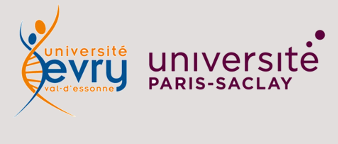Improving non-invasive Brain-Computer Interfaces using an innovative real-time inversion method for EEG source reconstruction
Résumé
Non-invasive EEG-based Brain-Computer Interfaces (BCIs) seek to translate the brain’s electrical activity into computer commands. To do so, one needs to interpret the measured electrode potentials by extracting the most relevant features and classifying the patterns of interest. To accomplish feature extraction, a variety of time-domain, frequency-domain, and time-frequency domain analysis methods are commonly used, followed by dimensionality reduction algorithms. Eventually, classification is generally carried out by applying a Machine Learning classifier. Alternatively, feature extraction and classification steps can be regarded as a whole within the Riemannian framework. This framework is based on the Riemannian geometry, allowing easy manipulation of covariance matrices and characterized by its simplicity, accuracy, robustness, and transfer learning capabilities.
Even though EEG-based BCIs have excellent temporal resolution and usability, they suffer from poor spatial resolution. They are also more subject to noise from eye or muscle movements. Source reconstruction methods are known to improve the spatial resolution of scalp EEG. Consequently, they could be a way to improve classification accuracy.
The Neuroelectromagnetic Inverse Problem aims to reconstruct the current distribution of electric sources within the brain. This involves potentials measured on the scalp and a source-receptor model to describe the electric propagation through the head tissues. To get a unique and stable solution to this ill-posed Source Term Estimation (STE) problem, we propose to use our ”Renormalization” method. This approach delivers a real-time solution based on both the lead field computed from the model and the innovative concept of ”visibility”.
The purpose of the present work is to determine whether the ”Renormalization” approach can be helpful in the field of non-invasive EEG-based BCIs. Specifically, we investigate how far source reconstruction, as we propose, could complement existing BCI methodologies.
Fichier principal
 CORTICO2022_poster_VD_GT_JPI_AC_MHF_Improving_noninvasive_BrainComputer_Interfaces_using_an_innovative_realtime_inversion_method_for_EEG_source_reconstruction.pdf (1.5 Mo)
Télécharger le fichier
CORTICO2022_poster_VD_GT_JPI_AC_MHF_Improving_noninvasive_BrainComputer_Interfaces_using_an_innovative_realtime_inversion_method_for_EEG_source_reconstruction.pdf (1.5 Mo)
Télécharger le fichier
Origine : Fichiers produits par l'(les) auteur(s)


